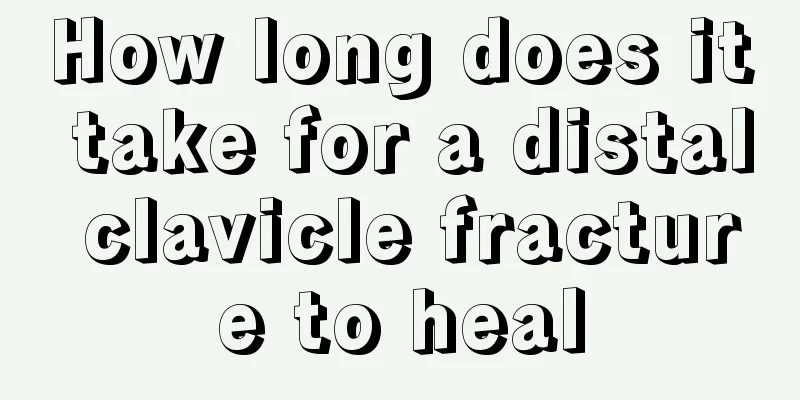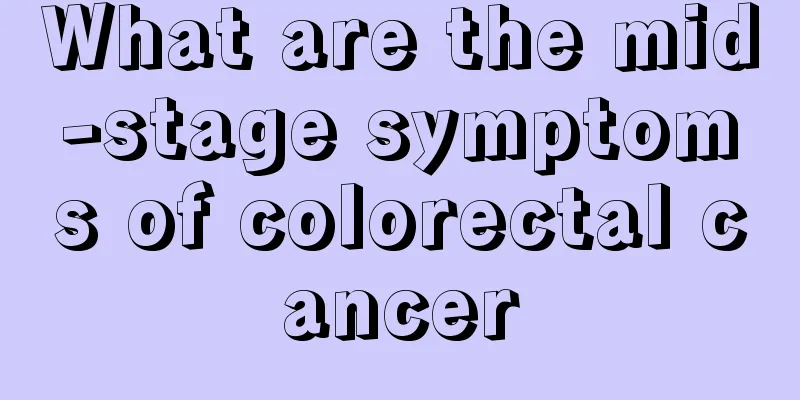How long does it take for a distal clavicle fracture to heal

|
After a clavicle fracture, you are not allowed to have any major activities for a long time, and if surgery is required, the doctor will choose to use plaster to fix it. When the patient sits or stands, the clavicle must not move too much, otherwise it will cause bone dislocation and make the situation more serious. Distal clavicle fractures require careful care and can be recovered within about three months. During this period, you should eat more vegetables and fruits to promote wound healing. All should be manually reduced under local anesthesia, and then fixed with an "8"-shaped plaster. The operation instructions are as follows: the patient sits upright with his hands on his hips, chest out, head raised, and shoulders stretched back. The surgeon stands behind the patient, holds the patient's anterior and lateral parts of the shoulders (or the outer sides of the elbows) with both hands and pushes upward and posteriorly to allow the patient to stretch his back and straighten his chest. At the same time, the surgeon uses the front of the knee to press against the back of the patient's lower thoracic segment to form a fulcrum. This can achieve a more ideal reduction of the fracture. On this basis, fix it with an "8"-shaped plaster bandage. To avoid compression of axillary blood vessels and nerves, during the entire process of wrapping the plaster bandage, the assistant should squat and place the middle and index fingers of both hands in a crossed position on the patient's armpits. The plaster bandage is wrapped around the middle and index fingers of the assistant's hands and continues until the plaster bandage is formed. In general, clavicle fractures do not require complete anatomical alignment. As long as the displacement is not very severe, good function can be achieved after the fracture heals. Indications for surgical treatment include open fractures; fractures with vascular or nerve damage; displaced fractures of the outer end or outer third of the clavicle with rupture of the coracoclavicular ligament; and nonunion fractures. The internal fixation method can be selected depending on the type and location of the fracture, such as "8"-shaped wire, Kirschner wire or plate screw fixation. Mid-shaft clavicle fractures Most mid-shaft clavicle fractures are treated with a forearm sling or a figure-of-eight bandage. Conservative treatment remains the main treatment for non-displaced mid-clavicular fractures. Indications for surgical treatment of mid-clavicular fractures include: open fractures; fractures associated with subclavian neurovascular injury; significant displacement and obvious skin bulge that may develop into an open fracture; ipsilateral clavicle and scapula fractures (floating shoulder); displacement exceeding the clavicle diameter or shortening exceeding 2 cm. There is great controversy in China about the choice of treatment method for middle clavicle fractures. For non-displaced middle clavicle fractures, conservative treatment can be tried, which rarely affects the patient's postoperative function and appearance. However, for displaced mid-clavicular fractures, surgical treatment is recommended. Because displaced mid-clavicular fractures are prone to cause complications such as shoulder deformity, shoulder dysfunction and nonunion after conservative treatment. |
<<: There is a lump on the collarbone of my neck
>>: Recovery period after clavicle fracture surgery
Recommend
How to refresh yourself when you are particularly sleepy
When people are particularly sleepy, if they do n...
What to eat for small cell lung cancer
What should you eat for small cell lung cancer? I...
Will anti-inflammatory drugs cause redness and hotness in the face?
People with sensitive skin are more prone to alle...
What is the correct way to use softener?
When washing clothes, you will find a problem. Du...
Is chemotherapy needed after thyroid cancer surgery? What should I pay attention to after thyroid cancer surgery?
In recent years, more and more people are sufferi...
What to pay attention to about skin cancer
When skin cancer occurs, many patients are in gre...
What is the treatment for moderate fatty liver
Fatty liver has a relatively large impact on our ...
Is it normal to have bladder inflammation after bladder cancer surgery? What should you pay attention to after bladder cancer surgery?
Bladder cancer is a common malignant tumor and a ...
What to do if thyroid cancer metastasizes? What are the treatments for thyroid cancer metastasis?
Once thyroid cancer metastasizes, it must be trea...
How to take care of yourself after childbirth
Many women do not take good care of themselves af...
Do you know how to treat neurasthenia?
Modern urbanites are under great work pressure, w...
What tests should lung cancer patients take? These six tests are needed
When the body shows symptoms suspected of lung ca...
How is advanced liver cancer treated? Three common treatments for advanced liver cancer
1. Surgical treatment. In the late stage of liver...
How many times a normal person needs to defecate every day
Humans have three urgent needs, one of which is d...
What can I do if the yogurt goes bad
We often drink yogurt in daily life, but sometime...









